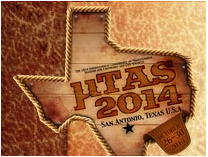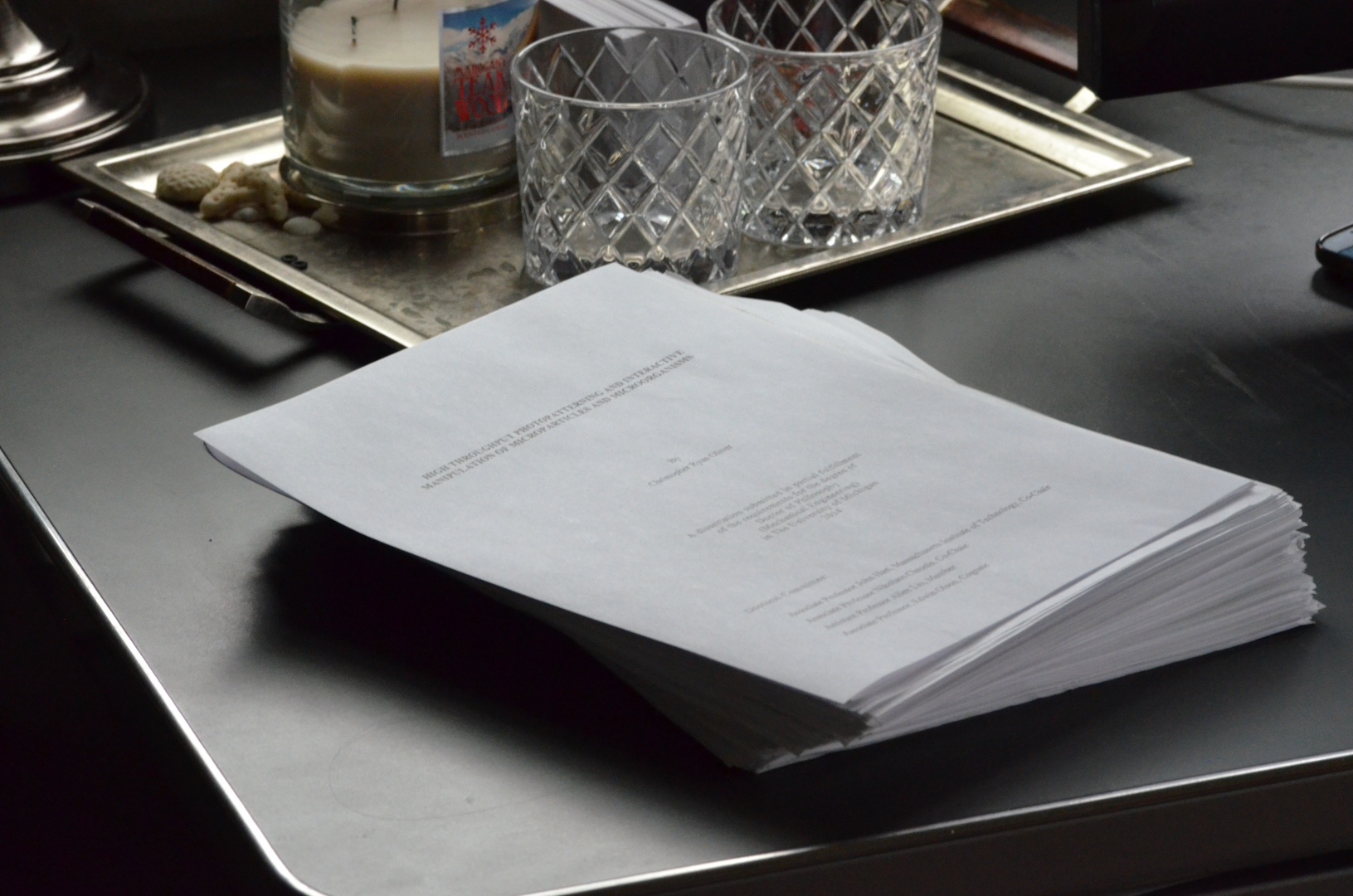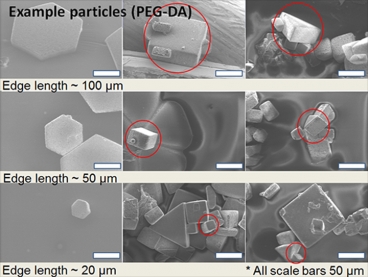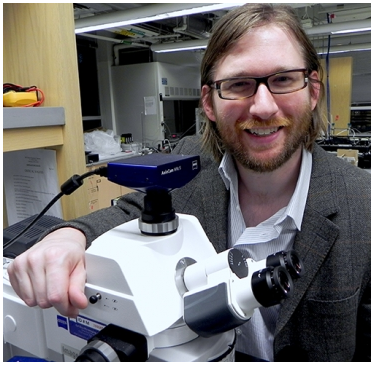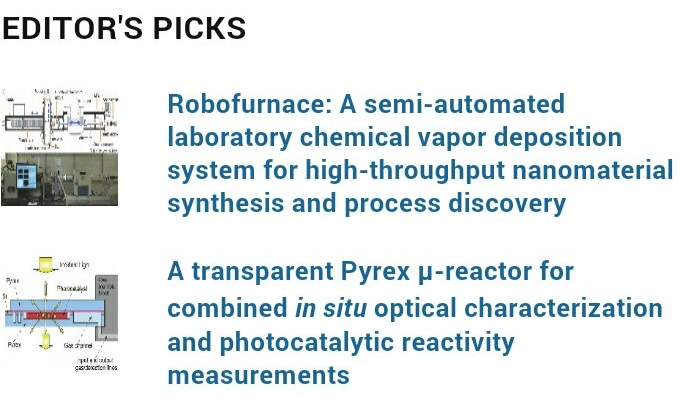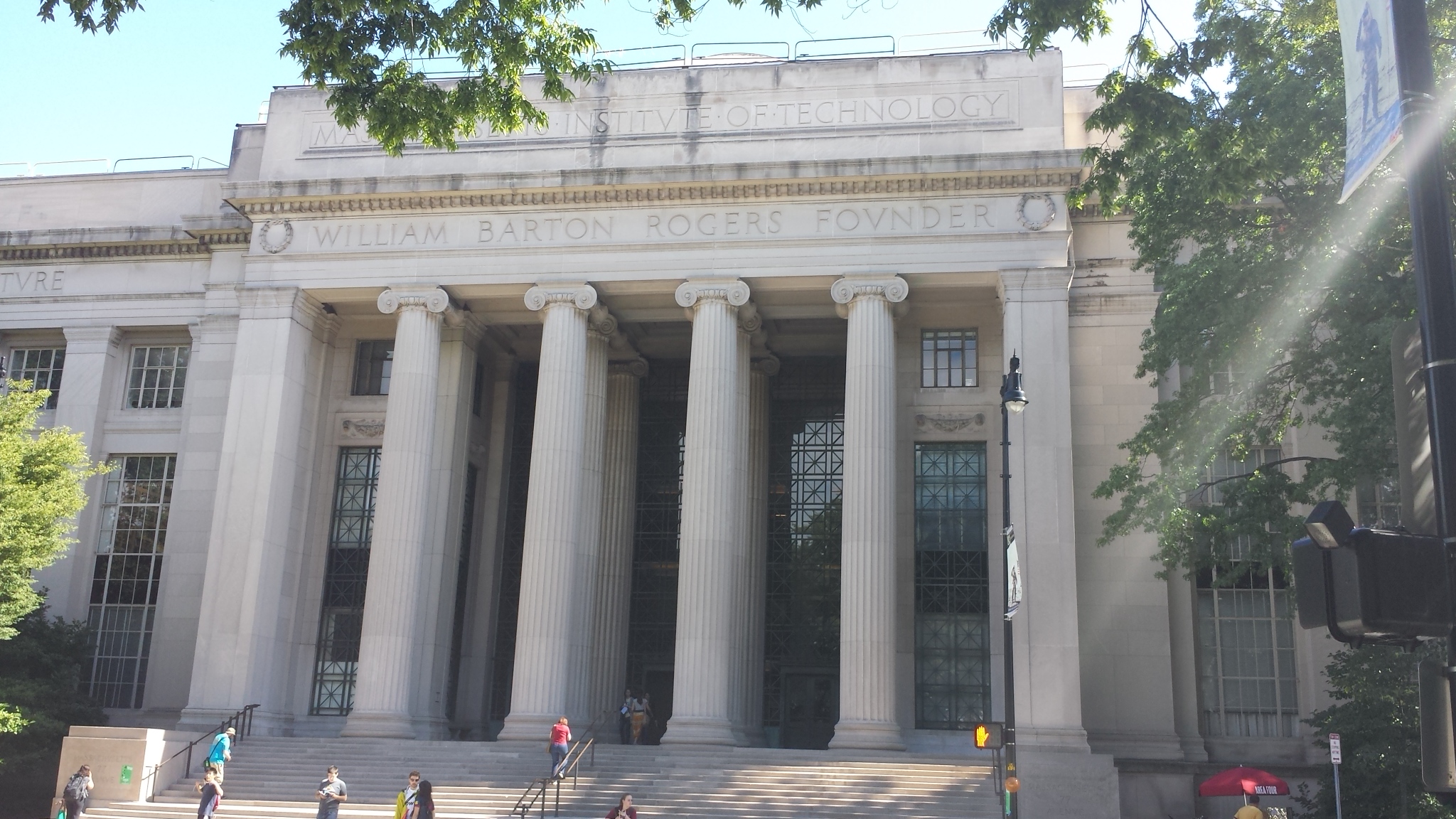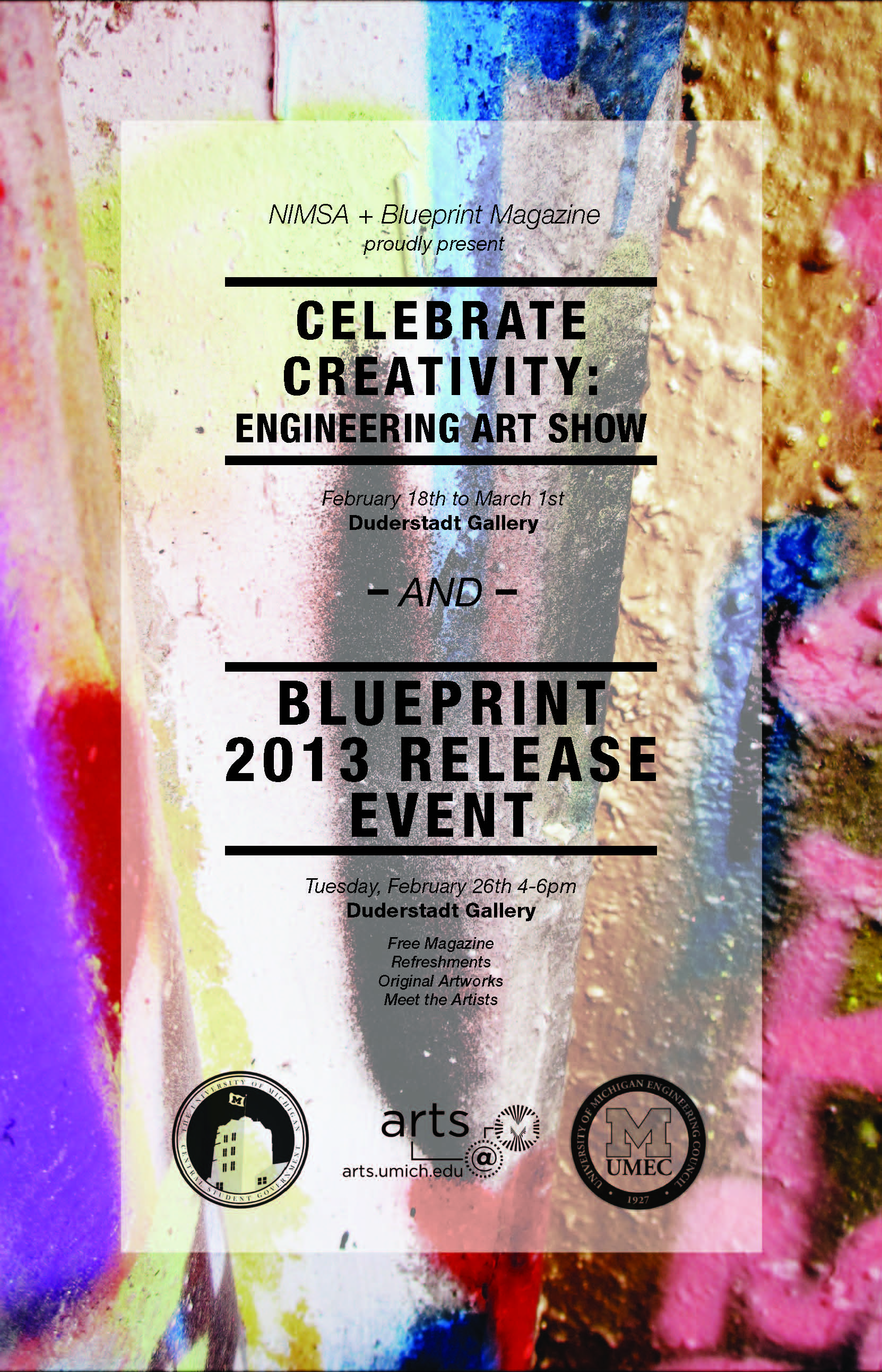Dear ME Faculty and Grad Students,
Christopher “Ryan” Oliver will defend his dissertation entitled “DIRECT-WRITE MANUFACTURING AND MANIPULATION OF MICROPARTICLES, OBJECTS AND ORGANISMS” (see attached abstract), on Thursday, November 6, 2014 at 1:00PM in 1180 R DC.
Dissertation Committee Chairs: John Hart and Nikolaos Chronis
ABSTRACT
DIRECT-WRITE MANUFACTURING AND MANIPULATION OF MICROPARTICLES, OBJECTS AND ORGANISMS
By
Christopher Ryan Oliver
Chair: Professor John Hart
Recent advances in soft material microfabrication technologies are enabling wide-ranging studies of cellular and organism behavior in vitro; however, these methods are generally time-consuming, challenging to implement by non-experts, are limited to planar features, and cannot be reconfigured within live environments. As a result, it […]

